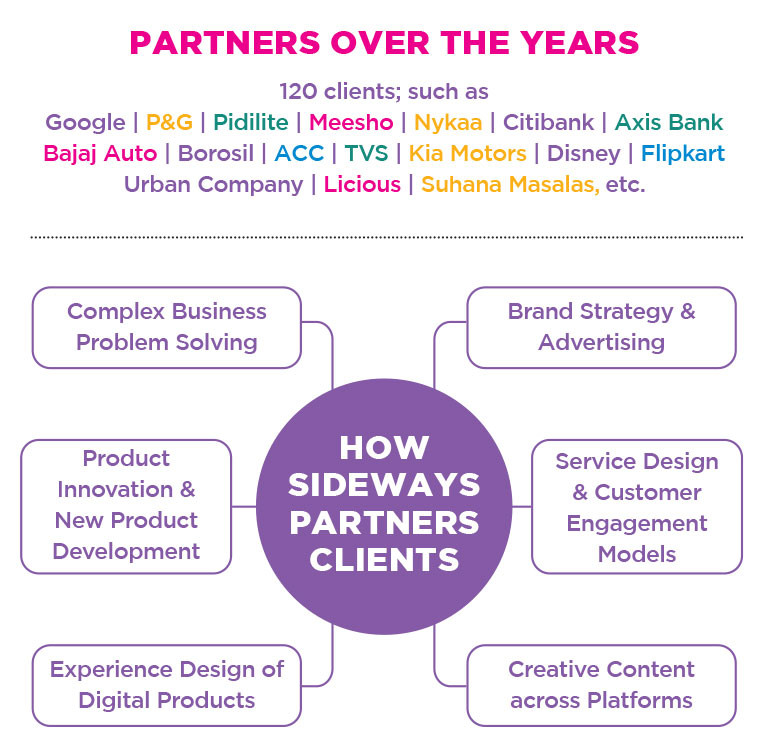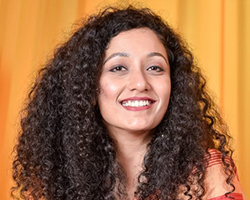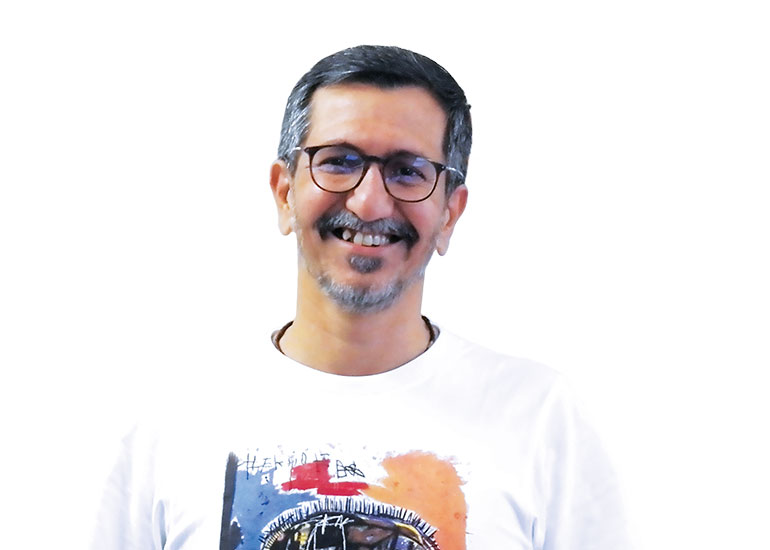When this celebrated adman left Ogilvy a decade ago, he was very clear that he wanted to start something new. But, what he lacked was a ‘plan’. He took the first step by finalising a name ‘Sideways Consulting’, part of which he confesses he would have willingly gotten rid of, given a choice. “Consulting is a big word today but I didn’t know what it meant back then. Hand on heart, I don’t even like it, it was born out of a compulsion to register, which made it mandatory to add a descriptor to the name,” says Founder Abhijit Avasthi who till date encourages his team to refer to themselves as just ‘Sideways’, i.e., professionals who apply lateral thinking to different aspects of a client’s business.
His point is that they are not just an ad/design agency or a consultancy, “If your business is facing a problem in the service design space, or if there is a product, sales or HR issue, etc., we will help you solve it. Consulting, advertising and designing are just subsets of what we do.” Sharing two case studies to explain what sort of brand problems they deal with, Avasthi says, “Two big conglomerates with contrasting cultures merged, the dilemma was how to get them to interact better with each other in the same office. Another problem that came our way was when Google Pay wanted to get more cash users on board, and inspire trust and confidence on the app. Such a project sits at the intersection of strategy, design and tech. Neither of them was an advertising or branding problem, so we solved it in our own way. He also recounts pitching an idea to Google Pay which became a resounding success for another rival brand, “Interestingly we had pitched the Paytm sound box idea to Google two years before it was launched. It still hurts that Google didn’t see merit in the idea back then.”
After operating from the meeting room of his residential apartment for weeks post launching the agency in August 2015, Avasthi moved his tiny team to a workspace in Prabhadevi. As an experiment, Avasthi started getting on board people with different skillsets unheard of in a typical agency– e.g., a strategic planner-cum-techie, an industrial designer, etc. The team he set out to build is 65-member strong today. It was also that initial experiment which managed to separate Sideways from the other agencies, eventually. Avasthi elaborates, “Brands have problems or opportunities at any given time. We are not presupposing that the solution to the problem lies in advertising alone, it might lie in a combination of tech, design and advertising, or a combination of service design and industrial design; we have a workforce that can tackle each of these issues with their skills. Also, on a need-basis we pull in people from outside depending on the nature of the project.”
He adds, “Maybe because of my past life and all that I have done in advertising, we are often called to make ad campaigns. When we show them our credits deck, clients say ‘Forget advertising, can you do this instead; invariably all CEOs, CMOs have tons of problems, but they don’t know who to go to. That’s where we fit in. The brand heads unfailingly say that they have never seen a company like ours.”
So, while they don’t want the ad agency tag, Avasthi says, the word consultancy too is hardly the right description for Sideways, because the latter only consult and don’t execute, Sideways on the other hand he says, is a creative problem-solving company. “We’re a mix of a consulting firm, an advertising agency, a design house, a technology solutions company, an industrial design studio, etc.,” he explains.
And their work reflects all of that, be it building a tech platform ground up, improving the retail experience, making an app, building an ecommerce site, designing products, brand strategy, etc. Interestingly, research, immersions, diagnostics are also tasks that they carry out in-house. Giving an example of their approach, Avasthi says, “Fevicol does mass advertising with Ogilvy. 5-6 years ago, Sideways did a project with them, where they came to us with a sharp problem statement. They said ‘We are kings pretty much everywhere in India. But there are certain geographies, states, where local players are incentivizing the trade and we’re losing shares. What should we do’. We did our on-ground research, I went to Punjab to get a better understanding of the problem and came back to give the client a battery of solutions, which included some advertising, some training modules for the business development agents and on ground interventions. Pidilite deployed the solution set and within four to five months, overcame the problem. The funny part is that a version of the same problem had come to me when I was working on the Fevicol account at Ogilvy but at the time the agency planned to first do a campaign, thinking it might solve the problem. It obviosuly didn’t.”
But does this put Sideways at the risk of being an ‘add on’ agency where there is a primary agency handling the more long term ad-making part of the job and Sideways gets pulled in only when it doesn’t bear fruit? Avasthi explains, “There are projects today that I’m doing for Pidilite, which are at the intersection of tech, service, design, etc. Ogilvy doesn’t even play in those areas. So, we are not an ‘add on’ agency. Our offerings are totally different. That’s why we don’t even pitch for an account, like other agencies. It is not out of arrogance; it is because our processes are different. Having said that, Haisha is a Pidilite product which only Sideways is building, including the advertising part. For Borosil, initially we did a lot of strategy work, built their e-comm site, while also designing new products for them. But now we are handling their advertising mandate too.”
Interestingly, advertising comprises more than 50% of their business which according to Avasthi gives them a big window to solve new-age problems with the balance 50%. Also, a bulk of their work is project based, again a conscious decision. Once a client’s problem is solved, they move on to the next client and problem.
There is a new found aggression at the agency, a slew of recent wins, and also a greater number of ad campaigns executed by Sideways, be it for Simpolo Tiles, Nic Ice-cream, Haisha Paints, Licious Chicken or Motomax. Some other clients for whom they do a lot of work are Sleepwell, KFC, Axis Bank, Raghav Realty, Bajaj Auto, Suhana Masala, Bombay Shaving Company, Ahmedabad University, among others. “Our problem is that advertising, especially video advertising, still remains our most display friendly work. We may have reimagined service journeys of credit cards, done training modules for a retail company but how do we display them. So, much of our work is not display friendly. That’s the challenge.”
Today Sideways doesn’t just provide different types of services to brands, it is also a company that sells products, Avasthi explains, “We have a division called Sideways Play, which designs toys and games. We’re also building a word games franchise called Wordit. The first game was launched last year after which we went on to launch a few more. We manufacture and sell them in India and internationally. So, we are very much a product company too.”
As Avasthi nears his 10th year anniversary, he has defined a distinct path for the agency, one he may not have foreseen when he brought on board his first two-three clients like Imagica, MyGlamm and Citybank. Talking about talent, he says, “Good talent is leaving this industry simply because they find no joy in doing the same task over and over again. For talent to exercise their creative muscle, we can promise a canvas like no other.”
Encapsulating the range of work they do, Avasthi proclaims, “Let’s just say we are trying to be for clients, what Birbal was to Akbar. I can confidently say that what Sideways does, not just agencies, no one in the world can.”
E - PAPER
'Sideways is the Birbal to Clients' Problems'
Abhijit Avasthi, Founder, Sideways talks about how their novel approach to solving complex issues offers solutions that no ad agency can ever come up with.
 BY
NEETA NAIR
BY
NEETA NAIR
22nd May 2024

RELATED STORY VIEW MORE
TOP STORY

RAD ADS OF THE WEEK
Some of our favourite ads from the past week. Read what the makers behind these ads have to say about the idea and execution
NEWS LETTER
Subscribe for our news letter
E - PAPER
-

CURRENT 
LAST WEEK
Subscribe To Impact Online
IMPACT SPECIAL ISSUES

Anupriya Acharya Tops the IMPACT 50 Most Influenti
Advertising Turbocharged
A Toast to creativity
GOAing towards tech-lead creativity
REDISCOVERING ONESELF
50 MOST INFLUENTIAL WOMEN LIST 2022
BACK WITH A BANG!
Your Best Coffee Ever
PR Commune Magazine June-July 2022
13th-ANNIVERSARY-SPECIAL
PR Commune Magazine April 2022
VIDEO GALLERY VIEW MORE

Use your existing account to sign in





